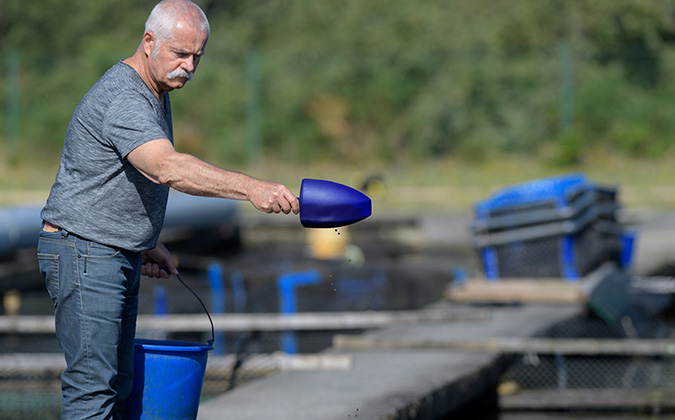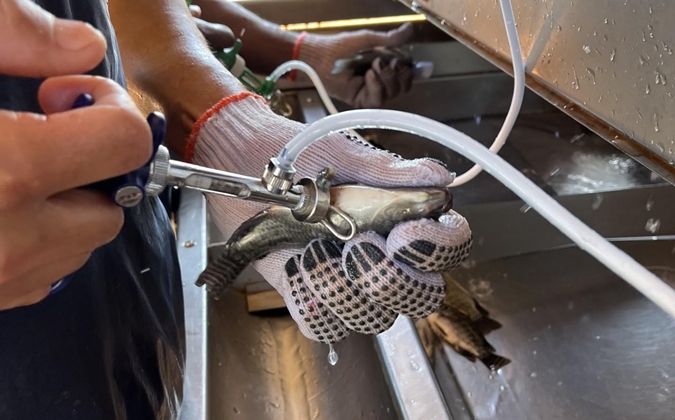
Fish Farm Forum is pleased to host this editorial page on behalf of Pharmaq.
Pharmaq
Measurement and environment are key to fish welfare
In the last decade, fish welfare has become a prominent driver of aquaculture operations. While increased involvement of dedicated fish-health staff across the industry has been pivotal in ensuring an increased focus on fish welfare, Angela Ashby, head of clinical services at PHARMAQ Analytiq, believes that the engagement of production staff in this area remains underappreciated.
“There’s a misconception among the general public that there’s no thought given to the welfare status of the fish in commercial aquaculture, but it is quite genuinely front of mind for almost everybody working in the industry,” she said.
How to manage distinct welfare testing
The measurement of the welfare status of fish poses a number of challenges beyond those experienced in the assessment of terrestrial-animal welfare. They don’t vocalize or display altered facial expressions when distressed as you may observe in farmed cows or pigs, for example. Another obvious challenge is practical assessment of individuals that live under water from above the surface. The measurement of fish welfare within commercial Atlantic salmon production is an area where marked progress has occurred in recent years, she noted.
“There are a number of different models for assessing welfare in animals. For the last few years, we’ve been working more with what we call operational welfare indicators. These allow for practical and consistent assessment of the welfare status of individuals or groups of fish in an aquaculture setting.
“Ten years ago, most staff working on fish farms in the UK had only fairly basic knowledge of the importance of fish welfare and the use of operational welfare indicators. Staff training is vital in ensuring that the people working with fish day to day understand why fish welfare is so important, how to maintain a high level of fish welfare on their farms and how to recognize early signs that a welfare compromise may have occurred.”
The current issues in fish welfare
Management of compromised gill health and sea lice are currently the main areas of fish-welfare focus for Atlantic salmon farmers in Scotland, Ashby explained, noting issues posed directly by the presence of lice themselves if lice populations are not controlled and also challenges with the use of treatments for controlling lice and other gill-health issues.
“There is a lot of understanding now that in order for treatments to have the most positive impact, they should be performed early, while fish are in good condition. This is reflected in outcomes we see with the use of non-medicinal lice-removal systems. We had some reservations and concerns with these systems when they first began to be used, but they have been improved. The engineering of these systems is continually being tweaked to optimize performance and minimize any negative impacts on the fish.”
Ashby hopes that even more welfare-focused approaches to sea lice management and other health interventions can be developed.
“What I would like to see is a day when we don’t have to handle fish at all to manage health challenges such as sea lice. I think that what we really need — and what the industry continues to work toward — is a solution incorporating the use of new production technologies alongside optimized biological-control methods, selective breeding for more robust salmon and potentially even a sea lice vaccine,” she said.
The welfare of cleaner fish, used in the biological control of sea lice, has “shot up the agenda” in recent times, she explained. There is a clear understanding that cleaner fish need to have high welfare status not only from an ethical perspective but also to be effective at controlling sea lice levels.
“Our customers are having a lot of success with focussing on optimizing the cage environment for cleaner fish, including providing suitable environmental enrichment for the species present,” she noted. “It really pays a lot of dividend in terms of the effectiveness of the job that they’re there to do.”
Ocean ecosystem poses unique risks
Open-ocean aquaculture is exposed to potential welfare challenges that other forms of food-animal production are not, Ashby stressed, but while some events are outside the control of those working on-site, improved knowledge of the biological interactions affecting fish in open-aquaculture systems can better prepare for some of these eventualities.
“There’s lots of work at the moment looking at things like the fish microbiome. Fish have unique populations of resident bacteria and other microorganisms present on the skin, on the gills and in their gut. What we’re now realizing is that these microbial populations can be very different between different populations of fish, and this may contribute to varied resilience, and so health and welfare consequence, in the face of certain health challenges — whether it’s exposure to bacteria, a virus or some environmental insult, such as a jellyfish or phytoplankton bloom,” she continued.
“I think in the future, we’ll be able to recognize what is a desirable or undesirable microbiome, in terms of resilience against health challenges. The obvious end goal would then be to identify natural methods that could be used to encourage the shift of a population’s microbiome in a way that promotes good health — such as the use of targeted pre- or probiotics.”
Posted on: August 03, 2022







